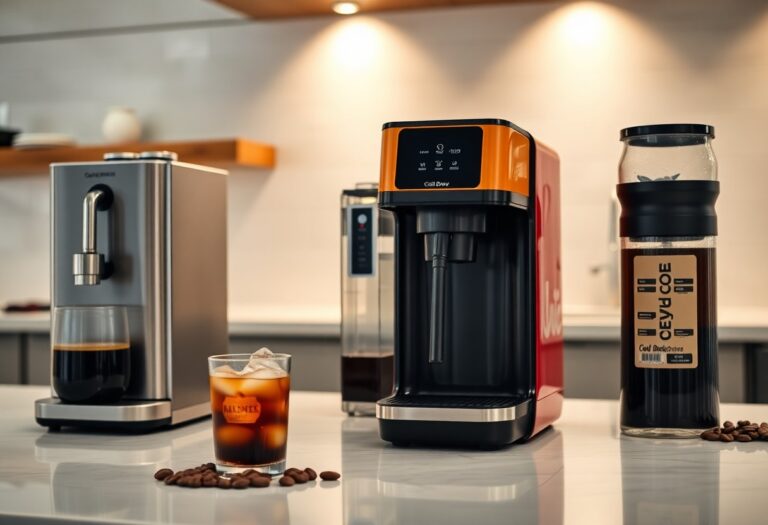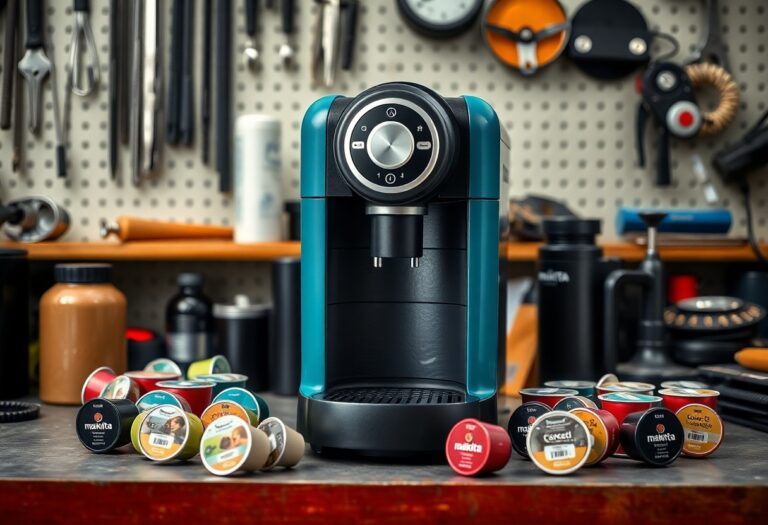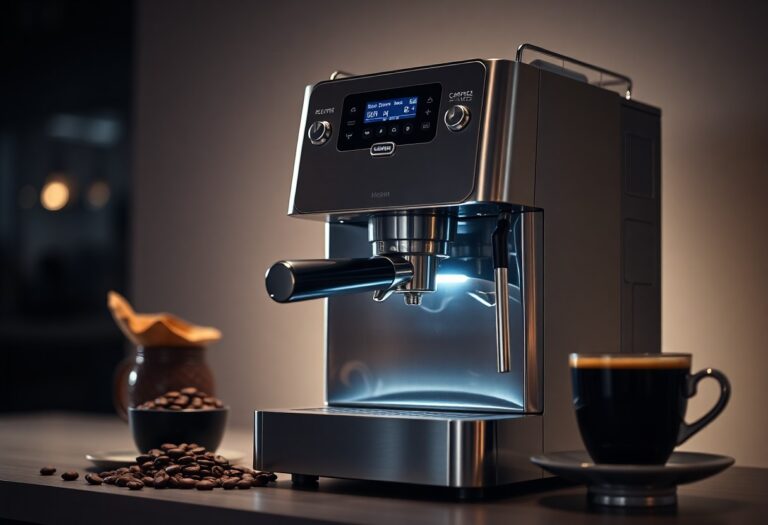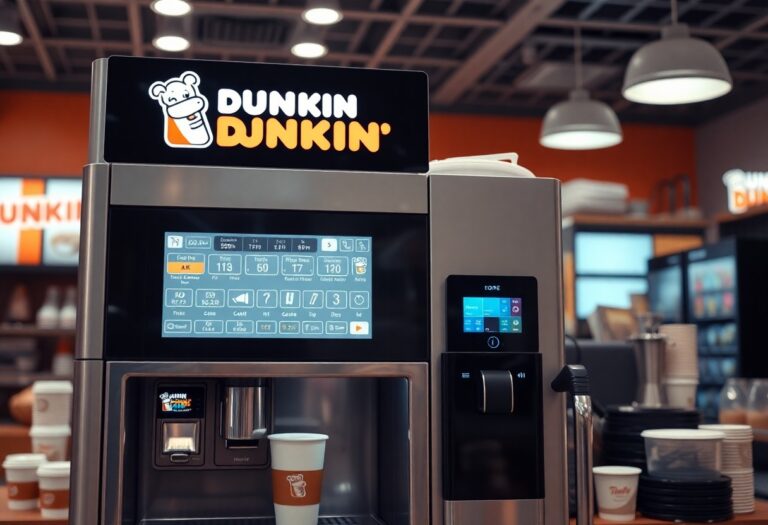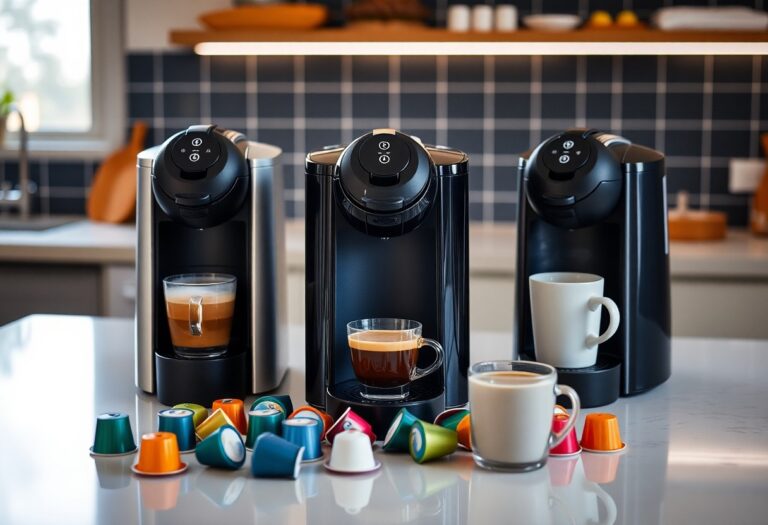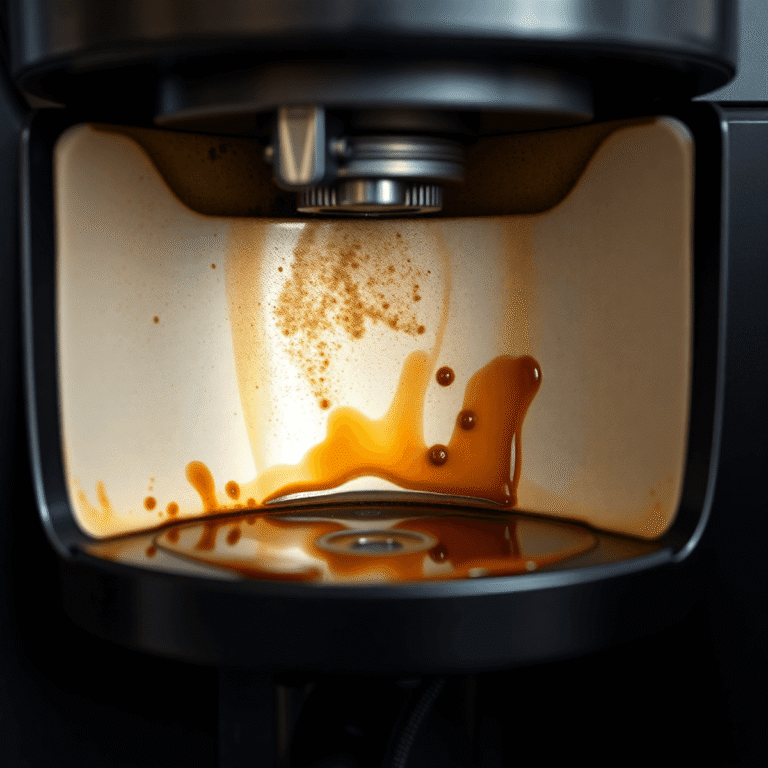What is the Common Problem of Coffee Machines – Troubleshooting
It’s common for you to encounter issues with your coffee machine, but understanding these problems can enhance your brewing experience. Many users face issues such as inconsistent brewing temperatures, clogs in the water lines, or even malfunctioning buttons. Knowing how to troubleshoot these problems can save you time and prevent costly repairs. This guide will empower you with important tips to keep your coffee machine running smoothly, ensuring you enjoy your favorite brew without interruptions.

Key Takeaways:
- Clogs due to coffee grounds or mineral buildup are common issues that can hinder machine performance.
- Regular cleaning and descaling can help extend the life of the coffee machine and improve brew quality.
- Electrical issues such as faulty power sources or malfunctioning components can prevent machines from operating effectively.
- Brewing temperatures that are too high or too low can significantly affect the flavor and quality of the coffee produced.
- Checking user manuals for specific troubleshooting tips can provide guidance for resolving common problems quickly.
The Most Common Coffee Machine Malfunctions
When your coffee machine misbehaves, it can lead to frustrating mornings. Some of the most common malfunctions include unresponsive controls, display errors, inconsistent brewing temperatures, and water leaks. These issues often stem from user negligence, such as not following maintenance guidelines or neglecting regular cleaning. For a comprehensive guide on addressing such problems, check out How to Troubleshoot Common Coffee Machine Problems.
Unresponsive Controls and Display Errors
Unresponsive controls can be frustrating, leading to incomplete brewing cycles or difficulty powering the machine on. Often, these issues arise from a buildup of dust or moisture within the control panel, which can interfere with the buttons or touchscreen. A simple cleaning can sometimes restore function, but if the problems persist, it may indicate a deeper electrical issue requiring professional assessment.
Water Leaks and Their Hidden Causes
Water leaks in your coffee machine can be a sign of serious problems. The leaks may result from a loose or cracked water reservoir, clogged drainage systems, or worn-out seals. Sometimes, leaks stem from internal components, making them harder to detect immediately. Identifying the source of the leak is crucial, as it can potentially damage other machine parts or create more extensive issues.
Addressing water leaks requires a close examination of your machine. Start by inspecting the water reservoir for any cracks or improper placement, which could lead to spills. Also, ensure the drip tray is in place and clean. If the issue seems internal, like a faulty seal or hose, seeking help from a professional repair service may be necessary. Ignoring leaks can lead to more significant damage, potentially costing more in the long run. Therefore, tackling this problem early on is beneficial for your coffee machine’s longevity.
Brewing Issues: Why Your Coffee Tastes Off
Unpleasant flavors in your coffee can ruin your day. Various factors contribute to your brew tasting off, often pointing to issues within the brewing process itself. If you find your morning cup less enjoyable, consider examining your grind size, water quality, and even the brewing time. Each element plays a significant role in developing the flavor profile you crave.
Grind Size and Its Impact on Flavor
The grind size of your coffee beans significantly influences the extraction process, which in turn affects flavor. Finer grinds result in quicker extraction, leading to a more intense flavor but can also lead to bitterness if over-extracted. Conversely, coarser grinds may produce a weaker, less flavorful cup. Finding the right balance tailored to your preferred brewing method can elevate your coffee experience.
Water Quality: The Unsung Hero of Brewing
The quality of water you use for brewing is often overlooked yet vital to the final taste. Water composition can enhance or mute coffee flavors, affecting acidity and aroma. Ideally, use filtered water with a balanced mineral content to ensure optimal extraction and taste.
Consider that the average cup of coffee is made up of approximately 98% water. If your tap water contains high levels of chlorine, minerals, or impurities, it can introduce unwanted tastes, overshadowing the rich flavors of your coffee. Using filtered or bottled water not only helps maintain consistent taste but also improves the overall flavor profile you desire. A simple change to your water source can make a considerable difference in your daily brew.
Maintenance Myths: What You Really Need to Do
Many myths surround coffee machine maintenance, leading to ineffective practices that can harm your machine. The idea that you only need to clean your coffee maker once a month is a common misconception. Instead, maintaining a consistent cleaning schedule based on usage ensures optimal performance. You might also believe that using vinegar is the best way to descale your machine, but specialized descaling solutions often work more effectively and safely. Regular maintenance not only prolongs the life of your coffee machine but also enhances the flavor of your brews.
Descaling: Timing and Techniques That Matter
Descaling your coffee machine is important for removing mineral buildup that can affect performance and flavor. Generally, you should descale your machine every three to six months, depending on your water hardness and usage frequency. Invest in a reliable descaler specifically designed for your machine’s brand, and follow the manufacturer’s instructions for best results. Some machines feature a built-in alert when it’s time to descale, ensuring you never miss a cycle.
Cleaning the Brew Group: Step-by-Step Guide
Cleaning the brew group is vital for maintaining consistent taste and machine longevity. Start by removing the brew group when your machine prompts you to do so. Rinse it under running water and avoid using any harsh detergents. Degrease any coffee oils using a soft cloth or brush to reach small crevices. Once cleaned, let it air dry fully before reinserting it into the machine. Regularly cleaning the brew group, ideally after every 200 brews, ensures that coffee oils don’t build up and affect your coffee’s flavor.
Cleaning the Brew Group: Step-by-Step Overview
| Step | Details |
|---|---|
| 1. Remove Brew Group | Follow your machine’s instructions to safely remove the brew group. |
| 2. Rinse with Water | Use warm water to rinse the brew group thoroughly. |
| 3. Degrease | Gently scrub with a soft brush to remove coffee oils. |
| 4. Air Dry | Allow the brew group to completely dry before reassembling. |
Regular attention to the brew group not only ensures a pristine taste but also prevents clogs and mechanical failures. Stick to this step-by-step guide to keep your machine in top condition and enjoy fresh-tasting coffee. Over time, you’ll notice a significant difference in flavor and aroma, enhancing your overall coffee experience. Consistency is key, so incorporate this cleaning into your monthly coffee routine for the best results.

Troubleshooting Techniques: Diagnosing Problems Like a Pro
Identifying the underlying issues with your coffee machine can seem daunting, but employing structured troubleshooting techniques can simplify the process. Begin by categorizing symptoms, like leaks, strange noises, or inconsistent brew strength. Utilize the user manual for reference; many common problems are addressed there. Conduct a step-by-step evaluation, checking for clogs, improper setup, or software errors. By methodically following these steps, you can uncover the source of the problem without the guesswork.
Quick Fixes for Routine Issues
Many routine issues can be resolved with simple fixes that don’t require advanced tools or skills. For instance, descaling your machine regularly can prevent build-up that leads to poor performance. Cleaning the brew basket and ensuring all parts are correctly assembled are quick and often effective actions. Additionally, if your coffee isn’t brewing hot enough, check that your water temperatures are within the proper range; you may find a quick adjustment resolves the problem.
When to Call a Professional Repair Service
Seeking professional help is advisable when you encounter issues beyond basic fixes. Unusual sounds, persistent leaks, or error codes that persist despite troubleshooting indicate more complex problems. If you notice significant malfunctions, like your machine not turning on, it’s often a sign of an internal failure. Attempting to fix these issues without expertise can lead to additional damage, making a professional assessment not only wise but often necessary for preserving your machine’s lifespan.
Common issues like broken heating elements or malfunctioning pumps require specialized knowledge and tools to diagnose and repair. If you’re facing recurring problems that disrupt your daily coffee routine, consulting a professional can save you time and frustration. They can not only pinpoint specific issues quickly but also provide preventative maintenance tips tailored to your model. Often, the cost of repairs is a small price to pay compared to purchasing a new machine, making it a sensible choice to seek expert assistance.
Long-Term Solutions: How to Extend the Life of Your Coffee Machine
Your coffee machine can last for many years with proper care and attention. Investing time in regular cleaning, descaling, and proper usage will ensure that your machine not only brews great coffee but also operates efficiently. Staying informed about your specific model and adhering to the manufacturer’s guidelines can significantly contribute to its longevity, allowing you to enjoy a perfect cup of coffee for longer.
Best Practices for Daily Use and Care
Daily use and care are the foundation of preserving your coffee machine’s health. Always use filtered or distilled water to prevent mineral build-up, and clean all removable parts after each use. Avoid leaving water in the reservoir, as stagnant water can harbor bacteria. A quick wipe down of the exterior will keep it looking new and functional.
Choosing the Right Coffee Maker for Your Lifestyle
Selecting a coffee maker that aligns with your lifestyle directly impacts your daily brewing experience. Consider your coffee consumption habits—do you enjoy a single cup every morning, or do you often entertain guests? Machines offering programmable settings are great for busy mornings, while high-capacity makers suit social occasions or larger households.
Evaluating your personal coffee preferences and routine can help you find the perfect machine. For instance, if you value convenience and speed, a single-serve pod system may work best, while coffee aficionados might prefer a drip brew or espresso machine for enhanced flavor control. Additionally, portable coffee makers are ideal for travelers or those with limited space. Assess your living situation and choices to ensure you invest in a coffee maker that not only fits your needs but enhances your coffee-drinking experience.
Conclusion
Hence, understanding the common problems of coffee machines and their troubleshooting can enhance your coffee-making experience. By identifying issues like improper brewing, water leaks, or malfunctioning parts, you can ensure that your machine operates efficiently. Should you encounter persistent problems, you may want to consult a detailed guide, such as the Coffee Machine Won’t Stop Running? Troubleshooting Guide, to find effective solutions tailored to your machine.
FAQ
Q: Why is my coffee machine not turning on?
A: If your coffee machine isn’t turning on, first check if it’s properly plugged into the outlet. Inspect the power cord for any damage and ensure that the outlet is functional by testing it with another device. Some coffee machines have safety features that prevent them from starting if components are not correctly placed, so ensure that the water reservoir, brew basket, and any other required parts are securely in place.
Q: Why is my coffee brewing slowly?
A: Slow brewing can be due to a few factors, including a clogged water line or coffee grounds blocking the filter. Clean the machine regularly and ensure that you’re using the appropriate grind size for your coffee maker. If you’re using too fine a grind, it can restrict water flow. Additionally, check the machine’s manual to see if there’s a cleaning cycle you can run to help clear out any blockages.
Q: Why does my coffee taste bitter?
A: Bitter coffee often results from over-extraction during the brewing process. This can occur if the coffee grounds are too fine or if they’re left in contact with water for too long. Additionally, ensure that you’re using fresh coffee beans and the right water-to-coffee ratio. If your machine does not have a temperature control feature, using water that’s too hot can also lead to bitterness, so consider using a thermometer to check the water temperature.
Q: What should I do if my coffee machine is leaking?
A: Leaks can happen due to various reasons, such as a worn-out seal or a cracked water reservoir. Start by checking all parts to ensure they are properly assembled and undamaged. If you notice any cracks or excessive wear, replace the affected components. Additionally, clean the machine’s drip tray and check for clogs that may cause water to back up and leak. Regular maintenance, including replacing worn seals, can prevent leaks from occurring.
Q: How can I fix a coffee machine that isn’t producing steam?
A: If your coffee machine isn’t producing steam, it may be due to a clogged steam wand or low water levels. Begin by ensuring there is enough water in the reservoir. If the steam wand is blocked, soak it in a solution of equal parts water and vinegar to help dissolve any residue. After soaking, use a pin or needle to carefully clear any remaining blockages. Make sure to follow the manufacturer’s instructions for cleaning and maintenance for better performance.


